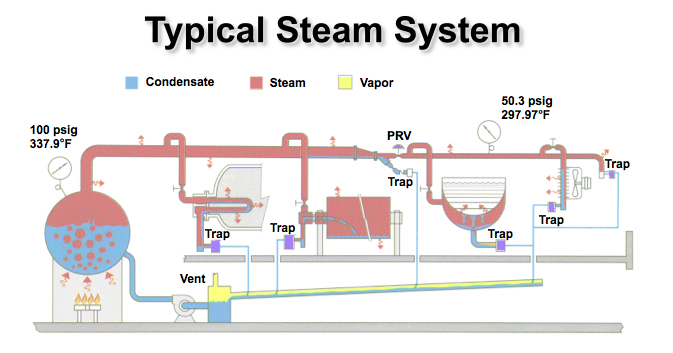Steam trap performance can significantly impact safety and overall plant efficiency, however they also tend to be neglected for long periods of time. This can prove to be costly – as much as $300 – $3000 per trap in energy losses alone. When adding in additional costs of downtime, failure of auxiliary equipment and emergency labor, implementing a steam trap management program proves to be essential.
4 Reasons to Implement a Steam Trap Management Program
- Leaking Steam Costs – Leaking steam costs waste money through steam energy loss.
- Production Impacts – Failed steam traps can affect production with inefficiencies and unnecessary shutdowns.
- Maintenance Costs – It’s cheaper to proactively maintain steam trap efficiency than to reactively make repairs using emergency labor.
- Safety of Personnel – Personnel injury can occur due to catastrophic failure of equipment or piping components.
What a Steam Trap Management Program Entails
A steam trap management program must be sustainable over the long-term to achieve results. To begin, the program must be benchmarked. You can only manage what is measured. This is done using trap survey forms, testing equipment, and a facility map. Once complete, a working document identifies opportunities, and implements an action plan.
Here are two examples of management programs in action:
1. Minneapolis Airport
- Over 700 steam traps in its steam system
- Prior to steam trap program, no way of know if a steam trap failed
- Initially installed SteamEye monitors on 66 steam traps
- Implemented complete SteamEye monitoring system in 3 phases
- Steam traps are now automatically tested every 5 minutes
- Complete steam trap population status is now available 24/7
2. Flint Hills Resources (FHR)
- 18,185 operating steam traps in its system
- Annual steam trap survey for the last 15 years
- Annual steam trap failure rate reduced to 2%
Saving and benefits are fully realized as trap failures are corrected. Data tracked should include number of leaking traps replaced, the amount of steam-loss prevented, and the monetary savings associated with preventing that steam loss.
For more information on how Campbell-Sevey’s can help you implement a Steam Trap Monitoring Program, contact our steam experts.


